Thank you for tuning in to the first episode of the Street Writer Podcast. I am your host Noe, on my personal and Capcom-Unity blogs I'm also known as BigMex. Today I'm going to look at one of the elements of great fighting games; specifically rivals. Not just any rivals but the best ones in the genre. Rivals are something you've seen many times and possibly one of the things you might enjoy most about fighting games. Great games know how to build a rival. Whether it's a friendly rival or a sworn enemy the best games knew how to build the tension in the story and through the gameplay. They knew how to make you root for a hero or jeer the bad guy. Even some forgotten titles knew how to create great rivalries. Think about how the developers made some characters heroes and others villains. What techniques did they use? Just because there were both good guys and bad guys in a game did it automatically create a rivalry? Not always, some of the best ones were planned while others developed by accident. When it came to great rivals who was on your list? Was it Ken versus Ryu? Kazuya versus Jin? Daigo versus Justin? What did you think made them great rivals? Which rivals were the best in the genre and why? Over the next few episodes I'm going to point out some of which I feel were the best. I'll begin with Street Fighter, it's pretty much the reason why I'm still writing and now doing podcasts. The template for a great rivalry started in the very first game.
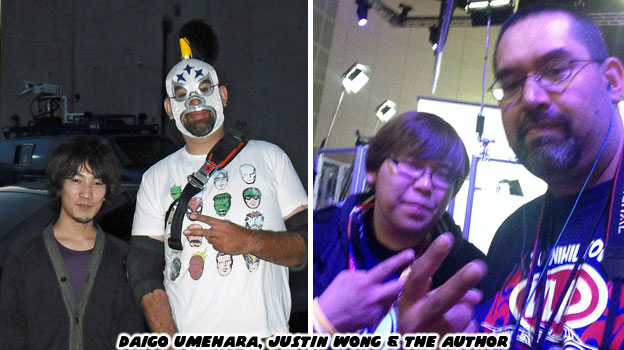
Sagat and Ryu were the oldest and longest standing rivals in the history of fighting games. They had been going toe-to-toe for almost 30 years. There were a lot of things that made them work as opponents as well as really popular individual characters. They represented a clash of styles, a clash of nationalities and at the heart a clash of purpose. Why did they fight? The designers at Capcom had to give them a reason to fight, the way they did this gave each character a personality. You could see it in the way each character was animated. You could see it in the official character art, in the game endings and through the story of the series. One fighter was the established champion. Sagat absolutely destroyed opponents and was feared by many. He knew what it took to get to the top, and it was much more than natural ability. Sagat was unusually tall and strong, making him a standout fighter at a young age. Before he became a champion he lost an eye in a fight. That event changed his life, he became cold-blooded fighter after that. He was willing to put his life on the line, and more important he was willing to put his opponent's life on the line in each fight. The other warrior, the man who would be king was new to the world of combat. Ryu was insanely talented, had a strong desire to win and was trusted with secret martial arts techniques. He was looking for a purpose in his fights, a sort of guidance that could only be found by fighting the best. Ryu was trying to find meaning whereas Sagat was trying to prove no one could beat him. In temperament they were night and day, destined to be opposites in every regard. The animosity between the two slowly faded over the years and was replaced with an intense respect. It was a level of respect that few characters in any genre would be written about. But it wasn't a friendly rivalry when they first met. That was something that the developers at Capcom managed to get through to audiences way back in 1987.
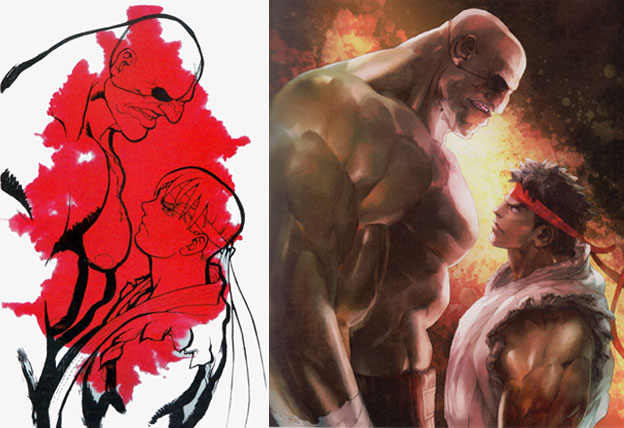
Imagine if you were a kid going to the arcade in the '80s. There were no cell phones, no really powerful home consoles. The best games could only be found in the arcade. If you were lucky maybe your parents gave you a dollar to play some games. You could spend four quarters on one game or play four different games. Every cabinet was fighting for your attention. Every company wanted your money. The fighting game was still finding its voice in the mid '80s. Other genres like space shooters and maze games were more popular. Studios were experimenting with different formats, different types of control setups to win players over. Capcom took some very big chances during this era. The first Street Fighter machine really stood out from other machines. The first cabinet had two enormous foam buttons, they were the size of overturned cereal bowls and much harder than the foam used in Nerf toys. The buttons were red and blue and you had to punch each one in order to get the character to punch or kick. As a kid I learned that I had to hammer down on the buttons with the edge of my hand instead of trying to punch them straight on. Tapping the buttons translated to a jab whereas the hardest hammer punch was a fierce strike. If you were lucky or knew how to perform the fireball, dragon punch or hurricane kick then you probably kept it a secret. Those were super attacks that could beat any opponent. You could use them to beat other players in a two-player match and feel like a real champ. Imagine what was going through our minds. Imagine being a kid and Street Fighter was your first introduction to the genre. You could punch the buttons as hard as you wanted and sometimes your character would perform these super moves. It was a high-energy concept that paid off for Capcom. Okay, so maybe it didn't pay off as well as they wanted. A few months after the game debuted the studio had to create a new controller for arcade operators, one with the more familiar six-button layout because people were having problems using the foam buttons. Some kids ended up breaking the controls because they were playing too rough, while others were injuring themselves for the same reason. I can still remember the machine in the local arcade when it came out. I can still remember seeing the foam buttons torn on one side because somebody was trying to rip it off the cabinet.
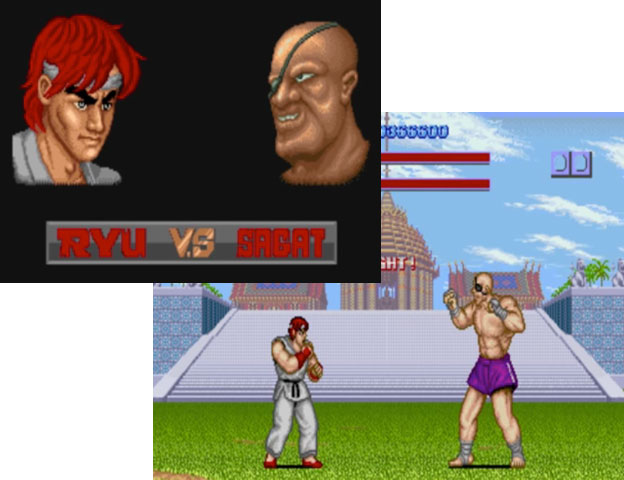
Ken and Ryu were amazing characters. All of the sprites in the game were big and colorful. They were much more animated than any other martial arts game. Ken and Ryu stood out because they weren't boring like the red and white characters in Karate Champ. They fought to a single hit while Ken and Ryu flew all over the screen like the characters in kung-fu films. One by one all of the rivals fell. It didn't matter what form they studied, whether they used a weapon or even if they could even teleport around the screen. A player that learned timing and how to perform the secret moves could actually go through the game on one quarter. That was a rare for most arcade games. Operators and companies made their money by creating titles that were challenging and often required a few credits to complete. Finding a game that had a good challenge yet you could beat with one credit was rare. Even in the early days the team at Capcom knew that they had to make each and every battle difficult but not cheap. If the game was too hard then a player had no incentive to continue. But if the game kept the action even and rewarded the player for having a superior technique or sense of timing then they were likely to pay a few extra credits to continue. Street Fighter did a good job of capturing the unpredictability of a fight. A player could dominate one round and then be taken out the next. A lucky punch might be the difference between becoming the champ and losing everything. It happened in the real world and was expected to happen in a game too. Thanks to this level of balance people were more than willing to put in an extra credit and continue from where they left off. Balance also made every opponent unique. Fights gradually got harder the further a player went into the game. No two opponents fought the same so it kept things fresh from match to match. If a player made it to the nation of Thailand then they felt confident that they would be able to beat the final opponents. Adon was a difficult fighter with his unique flipping "Jaguar" kicks. It was his master than was on a different level.
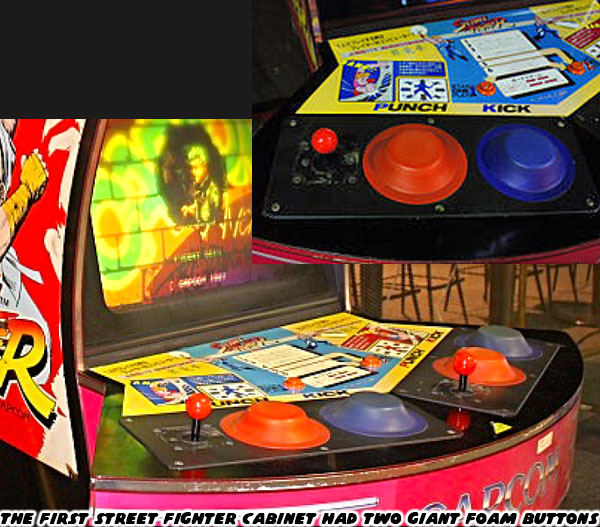
As colorful as the cast was there wasn't really an equal to the main characters. I mean everyone was roughly the same size but nobody looked or fought like Ken and Ryu, especially not the final boss. Yet this boss stood out because he was visually so different. The final match in Street Fighter had to be unlike the other battles. It couldn't be easy but again Capcom didn't want it to feel cheap. To help make the fight memorable they wanted to shake the confidence of players. There was a bald, dark skinned eyepatch-wearing character staring at the player in the stage intro. The guy was ugly, about two hundred pounds heavier than Ken or Ryu and easily a head and a half taller. He was biggest character in the game. Up until that point we thought that Birdie was largest and strongest brawler. We had no idea who we were dealing with. What made Sagat much more dangerous than any other opponent was that he had technique and not just mass on his side. Karate was seen as a sort of ultimate empty-handed fighting style. It was the style of fighting used by the heroes in movies and tv shows. What Sagat used was Muay Thai, an older and more brutal fighting art. Players learned to fear the man right away. He could stuff just about any attack and was surprisingly fast despite his size.
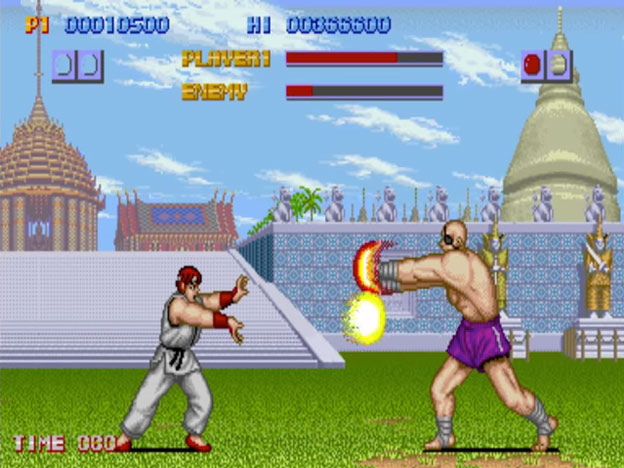
Capcom made sure to level the playing field by giving Sagat his own special attacks. Everything that made Ryu or Ken unique was stripped away on the final stage. The developers knew that the last opponent in the game had to be everything the main characters were and more. He needed his own ranged attack. Something that was not a throwing star or dagger. A bolt of fire that erupted from his hands, the Tiger Shot was something no other opponent could perform and equal to the fireball from the main characters. He also had a leaping knee strike, this would become known as the Tiger Knee. If cut down the distance on the stage and was a counter for the hurricane kick. More than that Capcom knew that he needed to be able to beat the players move for move. His range had to be greater, his kicks longer, his strikes faster and his defense tighter. Players that underestimated the giant were beaten very quickly. Capcom even gave Sagat a personality trait. He was cruel in his victory animation. He would cross his arms, face the audience and laugh. It was an early example of a taunt in a fighting game. He laughed as if the player was not even remotely good enough to take on the champ.
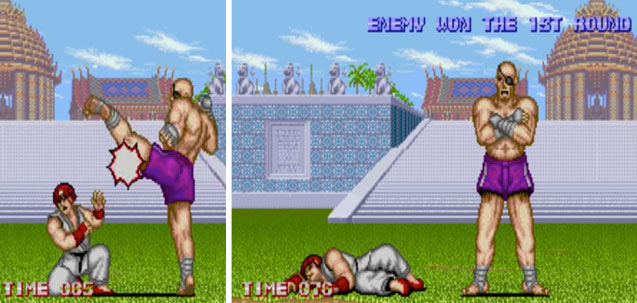
Gamers had to use all of the secret techniques and use them fast if they wanted to make it through two rounds. The original Street Fighter could be tough, special moves took way more energy than in any sequel. Just a few hits from Sagat was enough to knock you out. The dragon punch was the great equalizer, it was the one move that Sagat didn't have a counter for. It would become the punch used in story to defeat Sagat. The final battle was supposed to be a fight to the death. Sagat didn't care what happened to his opponents once they dropped. If someone were powerful enough to beat him then he accepted he would die in the process. Many people didn't notice this but if he was beaten he laid there with his eyepatch torn from his face. It was the insult to injury. At that very moment the rivalry was born. What made the character unique was that players and even Capcom did not know Sagat would become an important piece of the story until years later. He was just another boss guy in another arcade game. In hindsight the original Street Fighter was a fun game but it was not extraordinary. There was nothing that really kept people coming back. I remember playing it a few more times once the local arcade replaced the big foam buttons. But each time I visited the arcade there were always new games that seemed more interesting.
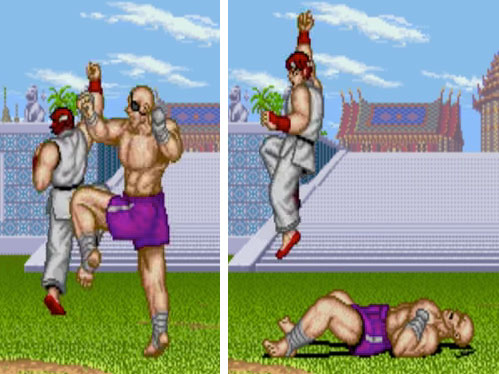
Part of the reason why some people didn't really remember the first Street Fighter was because the climb to the top happened very fast. It happened so fast that the story didn't really have a chance to sink in. Who were these fighters? Why should we care about them? Aside from some really neat moves what else did they have going for them? For that matter why should we care about the main characters? This kid named Ryu, did he really become the world champ because of his heart, his skills or because of a lucky punch? Every battle in the original game ended with the opponent saying "What strength!! But don't forget there are many guys like you all over the world." Ryu did indeed travel around the world, putting on breaking demonstrations to pay for his journey. He beat all of those guys until he earned his title. It was something that real life martial artists did more than a half century ago, before mixed martial arts matches were broadcast on TV. If a fighter wanted to prove they were the best then they actually had to go out there and show it. They would put on breaking demonstrations, Mas Oyama would even fight bulls in public exhibitions and kill them with a punch to the head. Perhaps a newspaper might cover those martial arts pioneers but often it was word of mouth that created the legends.
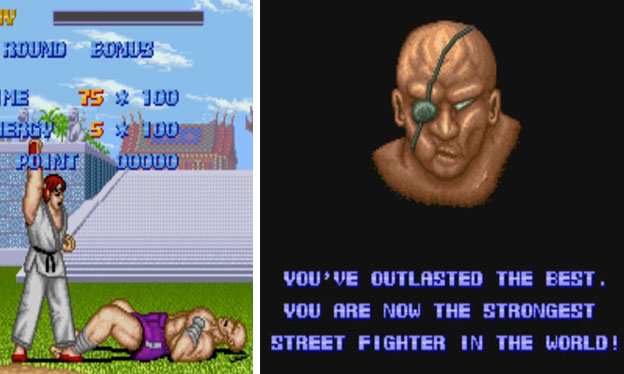
Ryu did become the best in the world when he beat Sagat. This was something that many people seemed to miss in the story of Street Fighter. In every sequel Ryu was the best and he was defending his title against new opponents. Ryu's first championship however did not come with a belt or trophy. Ryu won the war by attrition. Sagat even said it himself "You've outlasted the best. You are now the strongest street fighter in the world!" Note he didn't say best street fighter or even greatest street fighter, but rather strongest. Ryu outlasted them all thanks to his incredible conditioning, superior techniques and physical gifts. Because of his age there would only be room for improvement, this was something that the developers at Capcom could use to their advantage. Sagat on the other hand was the tired champion with no where else to go but down. For that character the challenge was internalized. If he wanted to reclaim the title, if he wanted to beat Ryu then he had to become stronger. So how does a seven-foot, one eyed former world champ become stronger? There was room for improvement but we wouldn't see it for years. The team that created the original Street Fighter would be broken up and be put on different projects. Some left Capcom to join other studios. The rivalry would have to be put on the back burner while Capcom figured out where else they could take the genre.
Arcade operators wanted Capcom to do a follow up fighting game. The studio saw that Technos / Taito's Double Dragon was a bigger hit in 1987 and decided that they should create a brawler instead of a fighting game as the sequel to Street Fighter. When they showed arcade operators the game called Street Fighter '89 featuring the characters Guy, Cody and Mike Haggar they go push back. It had nothing in common with the original game. So Capcom called the game Final Fight and released it anyway. They went back to the drawing board and began putting together all sorts of ideas for Street Fighter II. There were some influences from Hokuto No Ken aka Fist of the North Star. There were influences from real world pro fighters and wrestlers as well. There were also some really ugly characters that were stereotypes if not racist caricatures from other countries. A new karate fighter was planned as the star but Ryu and Ken were the ones that would return. The original plan did not include Sagat. The new boss character and sub boss were some sort of knight and ninja in armor. They eventually became Vega and Balrog, the Claw and Dictator for international fans. The decision to bring back Sagat was done after the studio came up with the concept of multiple boss characters. His re-introduction was supposed to mean something to audiences. Capcom had created a terrorist organization, the main character a Dictator named Vega surrounded himself with bodyguards / hit men that were the most dangerous men ever. A heavyweight boxing champ, a Spanish assassin and the former strongest fighter in the world became generals in this organization. Each fighter was more dangerous than the last.
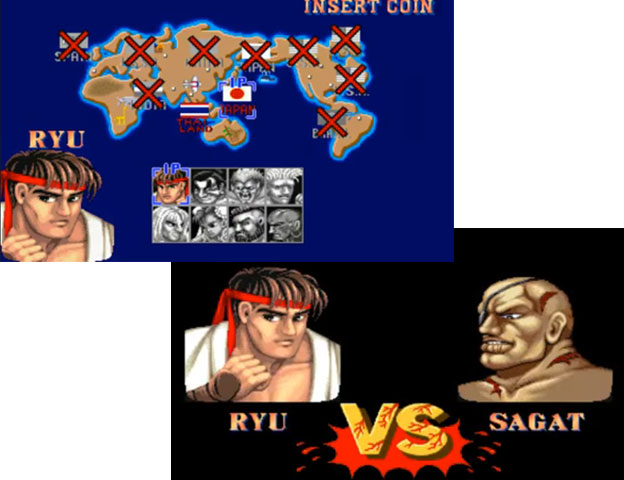
In Street Fighter II, after players beat the main roster and went through the first two generals they were surprised to discover the boss from the original game was waiting for them. Okay, not everyone remembered that Sagat was the original boss, the early generation of Street Fighter fans were young kids when the first game came out and didn't pay attention to the cast. Anyhow Sagt was back and he was as big and as ugly as he had always been. There was something profoundly different about him though. He had a massive scar across his chest. Who gave him this scar? Why did he return? What else was different about him? These were things that people who remembered the original game wondered out loud. Capcom would later on explain that it was Ryu that scarred him, it would create an incredible narrative. The main hero of the series had actually tried to kill the villain in the first game. Granted he was possessed by the Dark Hadou, a sort of evil energy living inside Ryu. So he wasn't quite himself at the time but nonetheless there was blood on his hands. If Sagat was smaller or weaker he would have been dead. Think about it for a moment. What other game had a main character that was like this? Sagat did not forget the fight and became an even more dangerous opponent because of it.
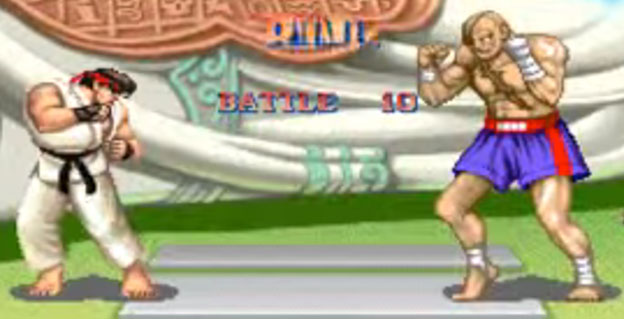
Sagat seemed a little bit leaner the next time he fought Ryu. He was indeed a little bit faster than before. Audiences saw that his library of moves had grown as well. He still possessed the Tiger Shot, the counter to the Hadoken or fireball. Yet he could now launch his attack while crouching or standing, which was something that neither Ken or Ryu could do. He still had the Tiger Knee, a leaping kick attack that was a counter to the Tatsumaki senpuu kyaku or Hurricane kick. Lastly he had developed his own punch. The Tiger Uppercut was the answer to the Shoryuken or rising dragon punch. Sagat's version started lower and rose higher than either Ken or Ryu's. These three special moves pretty much cemented his status as the ultimate rival. There was nothing that Ryu could do that Sagat could not do better. Combined with his strength and range he was a very formidable boss. The team at Capcom wanted audiences to understand that the time spent recovering from the first Street Fighter tournament had turned him into a much more dangerous opponent. The generals all reinforced that idea that there was more at stake in this tournament than a trophy. The most important part was having the previous boss return with a vendetta. It made for a much stronger narrative. The audience was hooked from that point on.
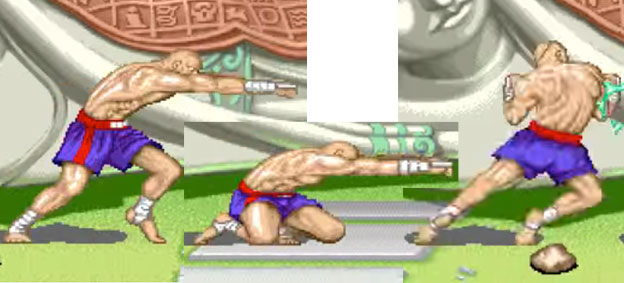
Fighting games could have depth and character growth, things that were usually reserved for role-playing games or adventure titles. Fighters were not throw-away characters after all. They would develop a strong following and influence characters in other games as well as in animated projects and comic books. Sagat and Ryu would do battle a few more times in canon. They would also fight a number of the other main characters in the stories but none of those battles had the intensity of the original rivalry. Sagat and Ryu crossed paths in the various sequels and VS titles from the studio. Each time they met the legend grew. Every encounter came with a certain level of intensity. It was palpable. Fans knew that the two had a history. After 20 years it had grown to mythical proportion. Fans were eating it up. When the artists at Capcom drew the pair, which actually wasn't that often, they made sure to capture the menace of Sagat and the defiance of Ryu.
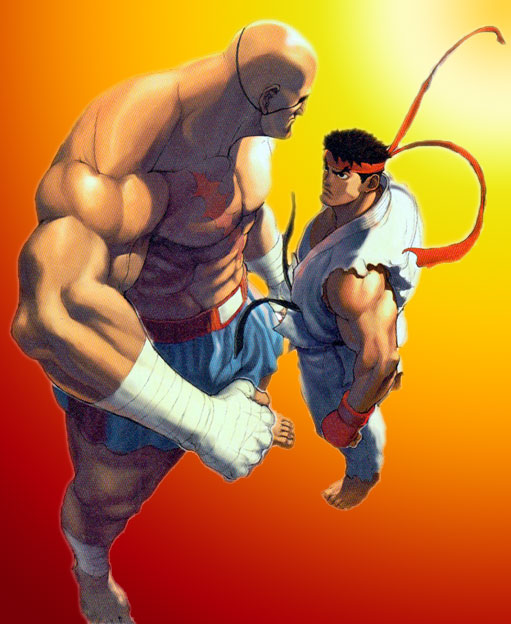
When it came to rivalries I couldn't think of any one that stood out more than the one between the Capcom legends. Was it the only great rivalry in fighting games? Oh no, not by a long shot. We're going to dig a little bit deeper and in the next episode and see what Capcom's rivals were working on, I hope to see you back for that. If you have any questions, comments or want to share a story please let me know. If you enjoyed this broadcast and would like to see more then leave a comment and consider sponsoring the Street Writer on Patreon.

Downloaded and listened both podcasts while going home from work yesterday.
ReplyDeleteYou've lightened my way home through the traffic, thank you.
Great contents, as usual.
Zero, thanks for that. I'm working on episode 3 which should be ready for next week. Will also start a podcast with the missus on happenings at the Disney company which might help get you through traffic as well.
DeleteGood, don't forget to update us when your patreon starts.
DeleteBye